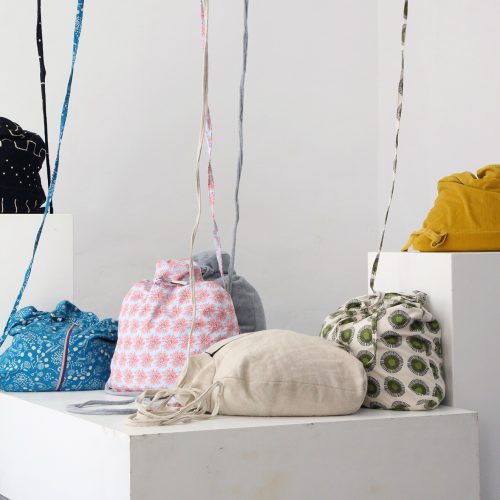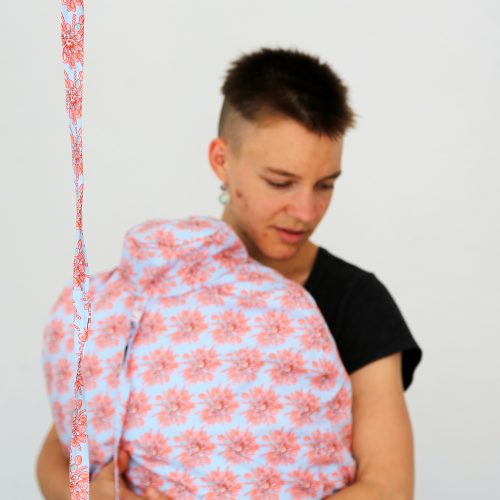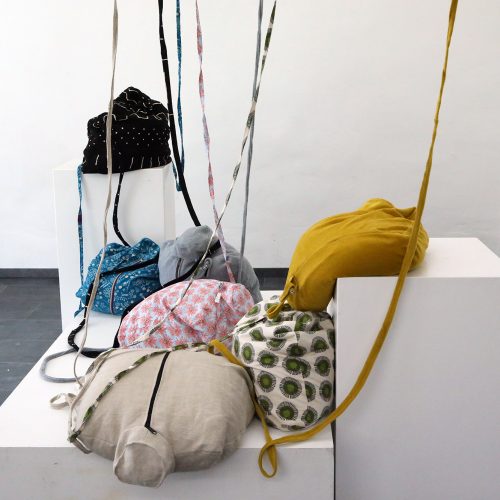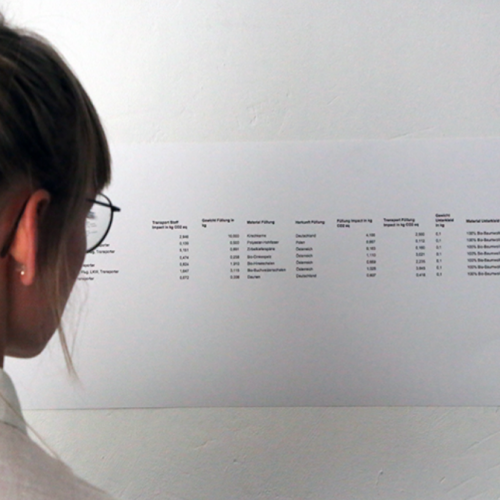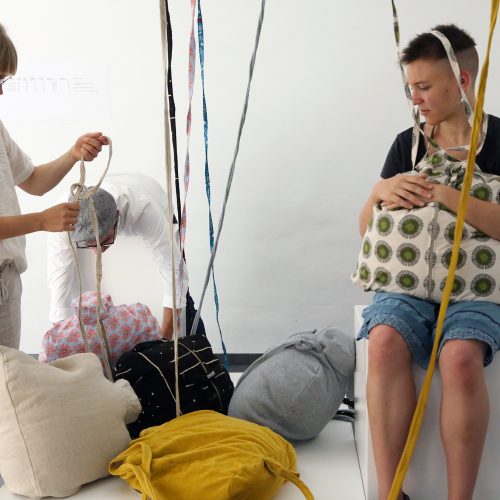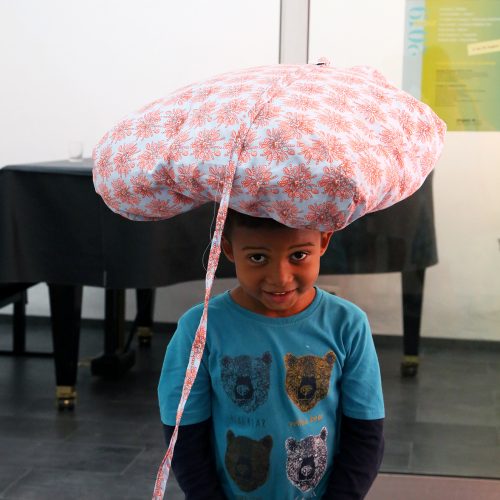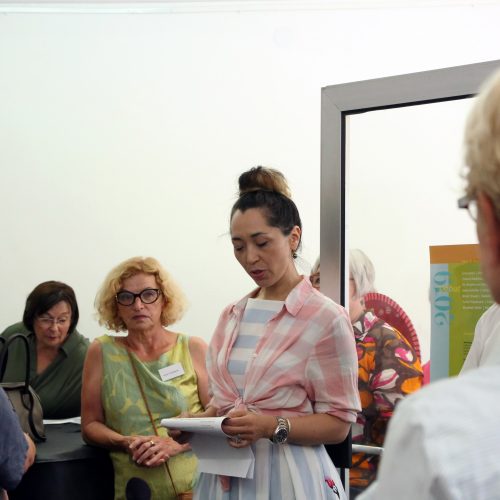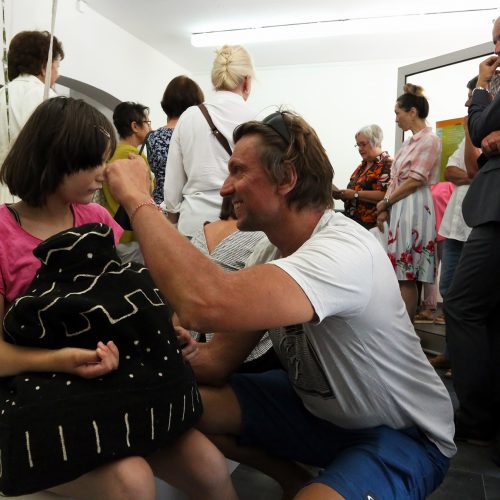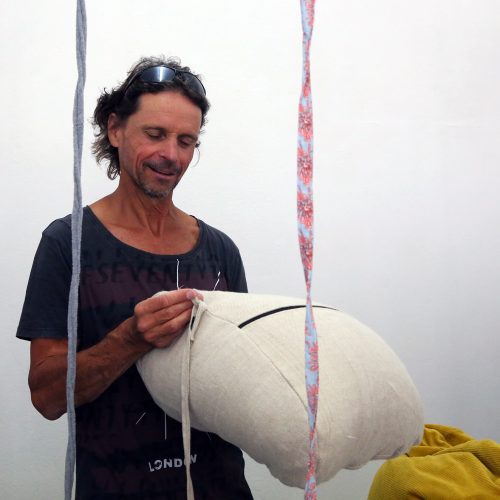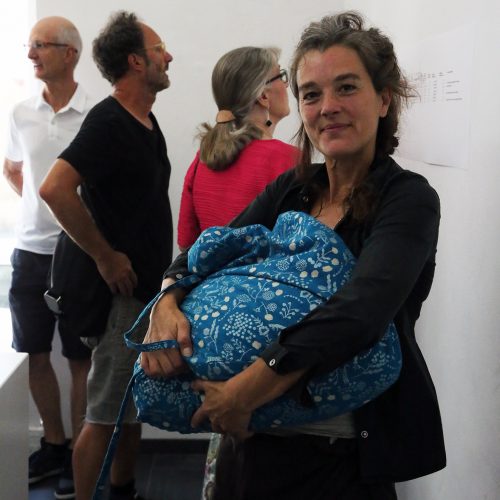Gathering (of Ayumi, Bintou, Bogdan, Gregory, Liu, Minet & Paula)
2019, here at Depot K, Freiburg
mixed media
Objects to be touched and embraced. Cloth and filling of different origin and different ecological footprint. Information board on each object.
Can the footprint be felt by touching the object?
The seven sculptural objects with international names are reminiscent of torso fragments – upper bodies without heads and arms, symbolizing vulnerability and universal corporeality. Each object consists of textiles that originate from different countries and draw on different agricultural and industrial practices. The materials underwent diverse processes of cultivation, processing and dyeing, giving the objects a multi-layered aesthetic and symbolic meaning.
The fillings are just as diverse: down, cherry stones, buckwheat, wood shavings and synthetic fabrics – materials that vary both haptically and in terms of their ecological balance. Together with the Faculty of Environment and Natural Resources at the University of Freiburg, the resource consumption of each cushion was calculated in detail, giving the work a scientific dimension and placing it in the discourse between art and environmental research.
Visitors to the exhibition were invited to feel the different materials by embracing the objects and thus directly “feel” the ecological footprint of the objects. This sensory experience was accompanied by an information board that enabled viewers to compare their impressions with the scientific data.
The combination of art, science and physical experience creates a work that addresses the dialog between body and environment. It challenges viewers to question and reflect on materiality, origin and consumption not only visually but also physically.
Thanks to Prof. Stefan Pauliuk, Faculty of Environment and Natural Resources, University of Freiburg, and Paula Vollmer, research assistant, for compiling the data on the ecological footprint of the individual objects.
